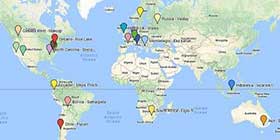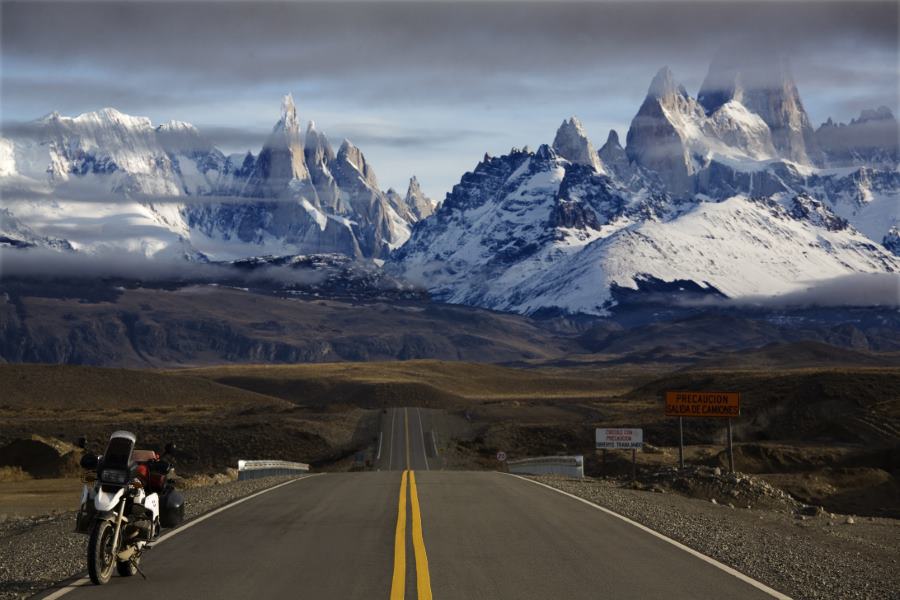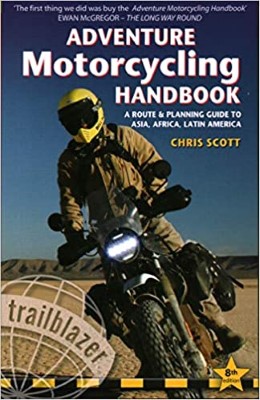It was hard to get up this morning as after our long ride of yesterday and then staying up late with our hosts. Plus we spent the night in a comfortable bed and, with shades on the windows, no sun to wake us. After coffee and a delicious breakfast of ham, eggs, and potatoes we headed for the garage. After 2400 miles of hard riding and noisy chains it was time for some much needed maintenance beyond the daily fettling. With the very kind assistance and advice (and garage, and tools, and rags, and enthusiasm) of Glen, we set to work on the bikes.

The first order of business was the chains. After we removed the chain guard on my bike, I discovered what poor condition the chains were actually in. My chain had tight spots to where one run had an inch of play and the other was drum tight. Re's chain actually had a kinked link. I don't know why they degraded so rapidly, we knew they wouldn't last the trip but had expected to get more than 3000 miles out of them. While we are carrying heavy loads and running the bikes pretty hard, the chains have been well maintained. Since we purchased them, the chains have been adjusted and lubed every 300 to 400 miles with DuPont Teflon chain lube. Our bikes, however, did sit on the showroom floor for over a year before we purchased them, so I am unsure of their condition prior to sale.

Regardless of why, they needed to be changed. While I removed the old chains and inspected the sprockets, Glen got out his Dremel and cut the new chains to length. The RK o-ring chains that I had purchased prior to the trip only came in a 120 link length but the Symbas only need 96 of them. The new chains went on easily, but after the chain guard went on, we quickly discovered that the o-ring chain is wider than the stock one, and it was dragging on the chain cover. We removed the covers, spread them slightly, reinstalled them, and everything was quiet once again.

It was also time for an oil change, so while the oil drained and I checked other fasteners for tightness, Glen was kind enough to run to the auto parts store for two new quarts of 10w40 Castrol GTX. The used oil was somewhat discolored but neither black nor burnt smelling, and the oil screens were clean. While the bikes' oil was drained, Glen and I took the opportunity to adjust the valves. I have the Symba shop manual on our laptop and was able to use it to muddle our way through my first valve adjustment on this type of bike. Screw adjusters are certainly easier than shims but finding TDC on these was not very intuitive. We did learn that my bike lacks many of the timing markings on the A/C generator that are present on Re's, too bad we started with mine first! The valves on both bikes were slightly loose and were easily put back to spec. In my visual inspection of the bikes I found that the tires were still in good shape and appear to have enough rubber to make North Carolina at least. I also discovered that we had donated three bolts to the road along the way – Re had lost one countershaft sprocket cover bolt and we both were missing one leg shield bolt each. With inspection done, valves adjusted, new chains installed, and fresh oil in the crankcases, the bikes were once again ready to roll.
I have said since the beginning of the trip that in my toolkit, I have a wrench to turn every fastener on our bikes. But while changing the chains and adjusting the valves, I discovered there were three fasteners on the bikes for which I lacked an appropriate tool – a deepwell 14mm socket to turn the crank, a big washer to unscrew the cover to get to the crank bolt, and a stubby crescent wrench to turn one rear axle fastener (that must be a 21mm or so). Many thanks to Glen, who donated those tools to our cause and was a great help in getting the bikes fit.

Re also took the opportunity to clean up the bikes a bit and we spent the rest of the afternoon and evening eating and swapping stories before heading off to bed again.
0 miles today. Topped off the oil in both bikes and added a couple of psi to all the tires.

















 5Likes
5Likes














 Threaded Mode
Threaded Mode







